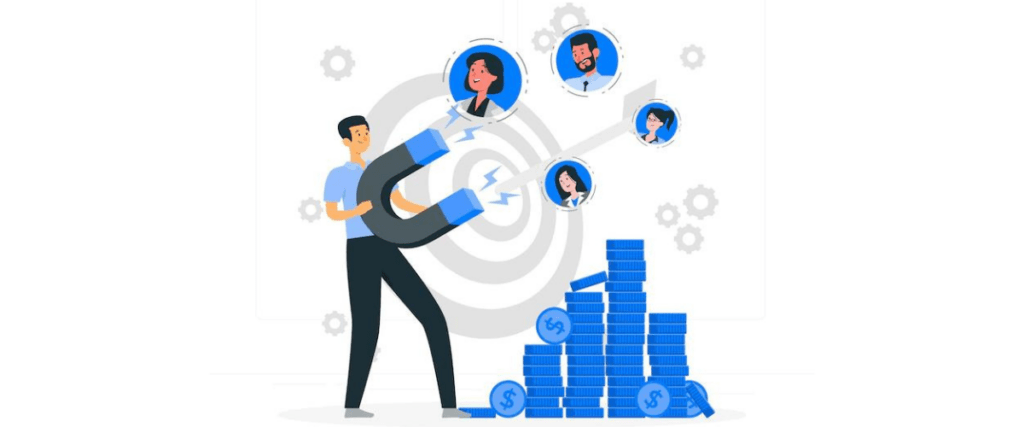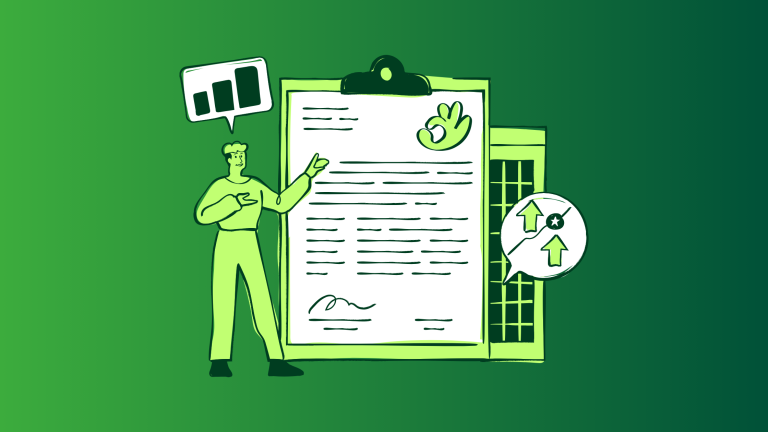How do successful businesses keep their customers coming back for more? Is it just about having a great product or service, or is there something more to it? Customer retention is a crucial aspect of any business. It’s not enough to acquire new customers; you need to keep them happy and engaged to ensure long-term success. But with so many businesses vying for customers’ attention, it can be challenging to stand out and retain their loyalty.
The key to customer retention lies in implementing best practices and workflows that prioritize customer satisfaction and engagement. By creating a seamless customer experience, you can build trust, foster loyalty, and ultimately drive revenue growth. In this article, we’ll explore some of the best practices and workflows that successful businesses use to retain their customers and keep them coming back for more.

Why is customer retention important?
Customer retention is important for several reasons.
Firstly, it is more cost-effective to retain existing customers than to acquire new ones. Acquiring new customers requires significant marketing and advertising expenses while retaining existing customers requires less investment.
Secondly, loyal customers are more likely to make repeat purchases and spend more money with a company over time. This can result in increased revenue and profits for the company.
Additionally, loyal customers can act as brand ambassadors and recommend the company to others, leading to new customer acquisitions.
Finally, strong customer relationships can lead to increased trust and customer satisfaction, which can lead to long-term loyalty and a positive reputation for the company.
Keeping customers coming back is crucial for any business. A well-designed workflow for customer retention can make all the difference. Here are 20 ways to make workflows for customer retention that will help your business thrive:
1. Create a loyalty program
A loyalty program is a marketing strategy designed to reward customers who frequently make purchases or engage with a business. To create a successful loyalty program, a business must first determine what rewards or incentives they will offer their customers. This could include discounts on future purchases, access to exclusive products or events, free gifts, or points that can be redeemed for rewards.
Next, the business must establish a system for tracking customer purchases and engagement. It can include features such as a membership card or mobile app. Finally, the business must promote the loyalty program to its customers and encourage them to participate by highlighting the benefits and rewards they can earn. By creating a loyalty program, businesses can build stronger relationships with their customers and encourage repeat business.
2. Personalize your communication with customers
Personalizing your communication with customers means tailoring your messages and interactions to meet the specific needs and preferences of each individual customer. This can involve using their name, referring to previous purchases or interactions, and providing personalized recommendations or offers based on their interests and buying habits.
By personalizing your communication, you can build stronger relationships with your customers. Also, increase their loyalty and satisfaction, and ultimately drive more sales and revenue for your business.
3. Offer rewards or discounts for repeat business
Offering rewards or discounts for repeat business is a marketing strategy that encourages customers to continue doing business with a company. By providing incentives such as loyalty points, exclusive discounts, or free products/services, customers are more likely to return and make additional purchases.
This not only increases revenue for the company but also helps to build a loyal customer base. Repeat business rewards can also help to improve customer satisfaction and increase brand loyalty, as customers feel appreciated and valued by the company.
4. Send personalized thank you notes after purchases
Sending personalized thank-you notes after purchases is a great way to show your customers that you appreciate their business and care about their experience. It not only creates a positive impression but also builds customer loyalty.
Personalizing the note with the customer’s name and mentioning the specific product or service they purchased can make the note even more special. It’s also important to be timely and send the note as soon as possible after the purchase. Whether it’s a handwritten note or an email, taking the time to express gratitude can go a long way in building a strong relationship with your customers.
5. Provide excellent customer service
Providing excellent customer service means going above and beyond to meet the needs and expectations of your customers. This includes listening attentively to their concerns, responding promptly and compassionately, and offering solutions that exceed their expectations. It also involves being knowledgeable about your products or services, anticipating customer needs, and treating each customer with respect and empathy. By providing excellent customer service, you can build strong relationships with your customers, increase customer loyalty, and ultimately drive business growth.
6. Offer exclusive deals to loyal customers
Offering exclusive deals to loyal customers is a great way to show appreciation for their continued support and to incentivize them to continue doing business with you. By providing special discounts or promotions that are only available to your most loyal customers, you can foster a sense of exclusivity and make them feel valued. This can help to build customer loyalty and increase the likelihood that they will continue to choose your business over competitors. Additionally, offering exclusive deals can be a great way to encourage customers to refer friends and family members to your business, helping to grow your customer base even further.
7. Send personalized birthday or anniversary messages
Sending personalized birthday or anniversary messages is a thoughtful way to show someone that you care about them and value their presence in your life. To create a personalized message, start by reflecting on your relationship with the person and what makes them special to you. Consider their personality, interests, and hobbies, and use this information to craft a message that is unique to them. You can also add personal touches, such as inside jokes or memories you’ve shared together, to make the message even more meaningful. Finally, make sure to express your love and appreciation for the person, and wish them a happy birthday or anniversary in a way that is sincere and heartfelt.
8. Provide excellent after-sales support
Providing excellent after-sales support means offering assistance and resolving any issues that customers may experience after purchasing a product or service. This can include responding promptly to customer inquiries, offering clear and concise instructions on how to use the product, providing troubleshooting assistance, and addressing any concerns or complaints that customers may have. By providing exceptional after-sales support, businesses can build trust and loyalty with their customers, which can lead to repeat business and positive word-of-mouth referrals.

9. Offer a referral program
A referral program is a marketing strategy that incentivizes existing customers to refer new customers to a business. The program typically offers rewards or discounts to customers who successfully refer their friends or family members to the business. This can help increase customer loyalty, generate new business, and create a positive reputation for the company. Referral programs can be promoted through various channels, including social media, email marketing, and word-of-mouth. By offering incentives to customers who refer others, businesses can tap into the power of personal recommendations and grow their customer base.
10. Create a customer feedback program
A customer feedback program is a structured approach to collecting, analyzing, and using feedback from customers to improve products, services, and overall customer experience. To create a customer feedback program, follow these steps:
1. Define your goals
Determine what you want to achieve with your feedback program, such as improving customer satisfaction, identifying areas for improvement, or measuring customer loyalty.
2. Choose your feedback channels
Decide on the channels you will use to collect feedback, such as surveys, focus groups, customer interviews, or social media.
3. Design your feedback tools
Develop feedback tools that align with your goals and channels, such as questionnaires, rating scales, open-ended questions, or feedback forms.
4. Collect feedback
Use your chosen channels and tools to collect feedback from customers.
5. Analyze feedback
Analyze the feedback you receive to identify patterns, trends, and areas for improvement.
6. Take action
Use the insights you gain from the feedback to make changes to your products, services, or customer experience.
7. Communicate results
Share the results of your feedback program with your customers, employees, and stakeholders to demonstrate your commitment to improving customer satisfaction.
8. Monitor and adapt
Continuously monitor your feedback program and adapt it as needed to ensure it remains effective in meeting your goals and improving customer satisfaction.
11. Use social media to engage with customers
Social media can be a powerful tool for engaging with customers and building relationships. To use social media effectively, businesses should create accounts on popular platforms such as Facebook, Twitter, and Instagram. They must post regular updates that are relevant and interesting to their target audience. They should also respond promptly to comments and messages from customers and use social media to address any concerns or complaints that arise.
By engaging with customers in this way, businesses can build trust and loyalty, and create a positive image for their brand. They can also use social media to gather feedback and insights from customers and to promote special offers, events, and other marketing initiatives. Overall, social media can be a highly effective way to connect with customers and build a strong online presence.
12. Offer seasonal promotions
Seasonal promotions are special offers or discounts that businesses provide to customers during specific times of the year, such as holidays or seasonal changes. These promotions can help attract new customers, increase sales, and build customer loyalty. By offering seasonal promotions, businesses can tap into the excitement and anticipation that customers feel during these times and create a sense of urgency to buy. Examples of seasonal promotions include discounts on holiday-themed products, limited-time offers on seasonal services, and special deals on products that are popular during certain times of the year.
13. Provide educational content on your products or services
Educational content is important for answering questions about products or services. It can also provide helpful tutorials and tips to increase user engagement and educate customers on the best practices for using a product or service. In addition, educational content can help create trust by providing customers with reliable, fact-based information that they can rely on when making decisions.
14. Host customer appreciation events
Host customer appreciation events are special occasions organized by businesses to show gratitude to their loyal customers and build stronger relationships with them. These events can take various forms, such as cocktail parties, dinners, open houses, or exclusive product launches. During these events, businesses often offer special discounts, freebies, or exclusive access to new products or services.
The goal of customer appreciation events is to create a memorable experience for customers and strengthen their loyalty to the brand. By making customers feel valued and appreciated, businesses can improve customer retention, increase sales, and build a positive reputation in the market.
15. Use email marketing to stay in touch with customers
Email marketing helps to keep your brand top-of-mind with customers and potential customers. By sending out regular emails, you can effectively stay in touch with your contacts and increase engagement over time.
This also allows you to generate more leads by promoting special offers or sharing helpful content that educates or entertains the reader. Email marketing is an effective way to nurture customer relationships, build loyalty, gain insights into customer preferences, and ultimately increase sales.
16. Offer free shipping or returns
Offering free shipping or returns means that customers do not have to pay any additional fees for the delivery of their purchases or for returning any items they are not satisfied with. This can be an effective marketing strategy to attract more customers and increase sales, as it provides convenience and cost savings to the customer. It also helps to build trust and loyalty with customers, as they feel more confident in making purchases knowing they have the option to easily return or exchange items without any added expense.
17. Provide product recommendations based on past purchases
Product recommendations based on past purchases can be generated using data analytics and machine learning algorithms. These algorithms analyze the customer’s purchase history and identify patterns and trends. Based on these patterns, the algorithms recommend products that the customer is most likely to buy.
For example, if a customer has purchased a laptop in the past, the algorithm may recommend accessories such as a laptop bag or a mouse. Similarly, if a customer has purchased a dress, the algorithm may recommend matching shoes or a handbag.
Some popular e-commerce platforms such as Amazon and Netflix use these algorithms to provide personalized recommendations to their customers. These recommendations not only increase customer satisfaction but also promote cross-selling and upselling, leading to increased revenue for the business.
18. Use customer data to personalize offers and promotions
Using customer data to personalize offers and promotions involves analyzing the data collected from customers’ interactions and transactions with a business. This includes their purchase history, browsing behavior, demographic information, and even their social media activity.
By using this data, businesses can create targeted promotions and offers that are more likely to resonate with individual customers. For example, a clothing retailer may use a customer’s purchase history to recommend similar items. This approach not only increases the likelihood of a sale but also improves customer satisfaction and loyalty.
19. Offer a satisfaction guarantee
Offering a satisfaction guarantee means that you promise to provide your customers with a product or service that meets their expectations. If a customer is not satisfied with their purchase, you will offer a refund or replacement. This helps build trust with your customers and shows that you stand behind the quality of your products or services. A satisfaction guarantee can also lead to increased customer loyalty and repeat business.

20. Keep customers informed about new products or services.
Keeping customers informed about new products or services is important for maintaining customer engagement and satisfaction. This can be achieved through various communication channels such as email newsletters, social media posts, and targeted advertising.
By providing updates on new offerings, you can improve customer retention and encourage them to make repeat purchases. Additionally, informing customers about new products or services can help generate excitement and anticipation, leading to increased sales and revenue. It is crucial to ensure that the communication is clear, concise, and relevant to the target audience to maximize its effectiveness.
By implementing these 20 ways to make workflows for customer retention,. You can create a loyal customer base that will keep your business thriving for years to come.
Learn how to improve customer retention by personalization: Read more



